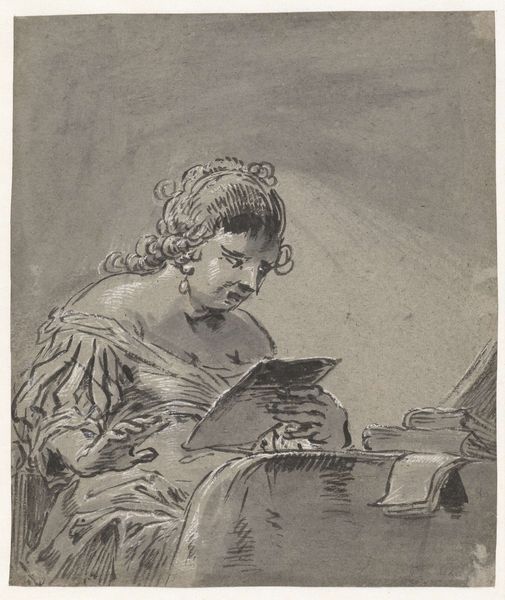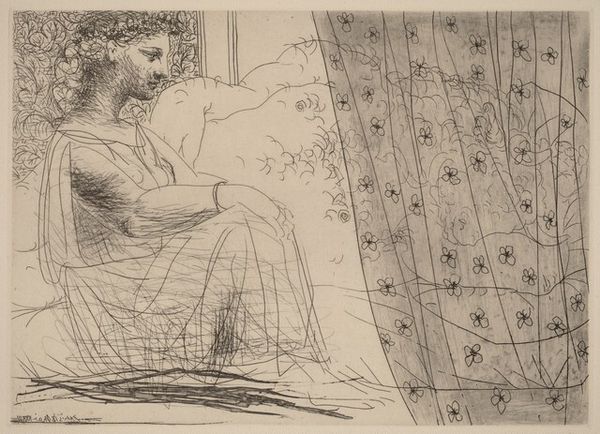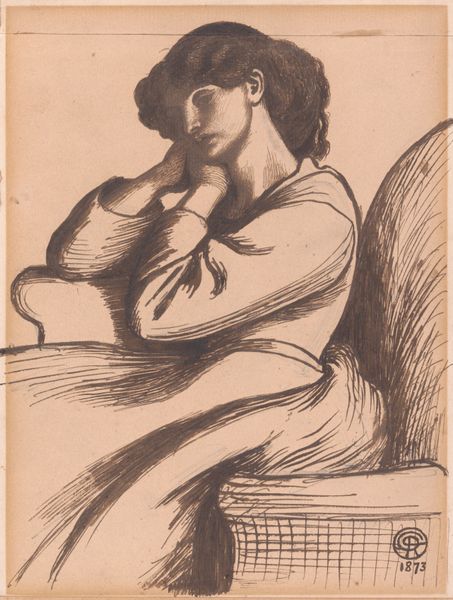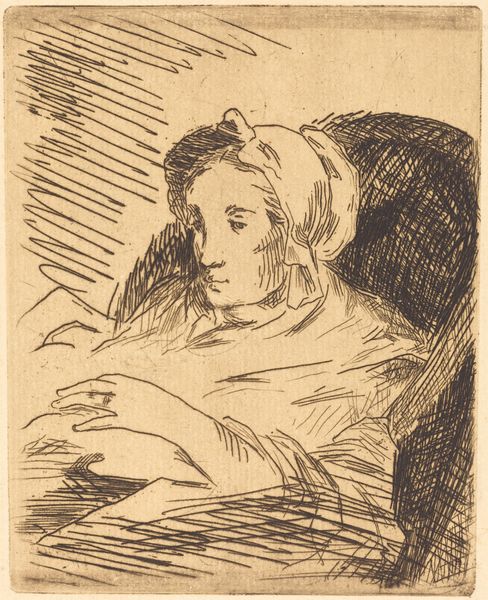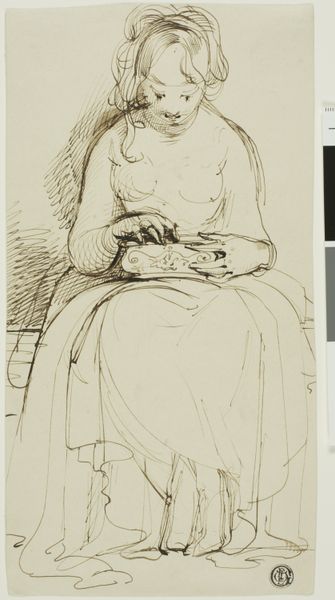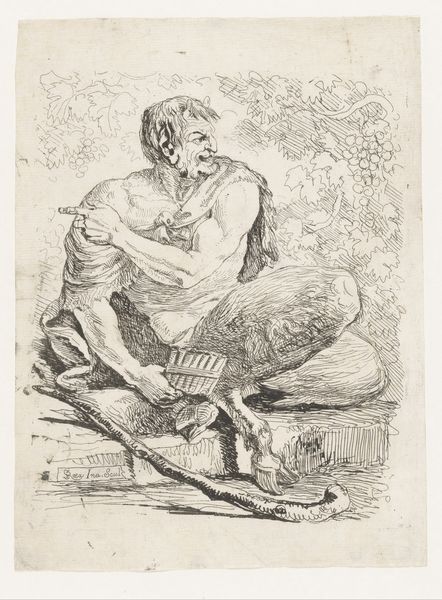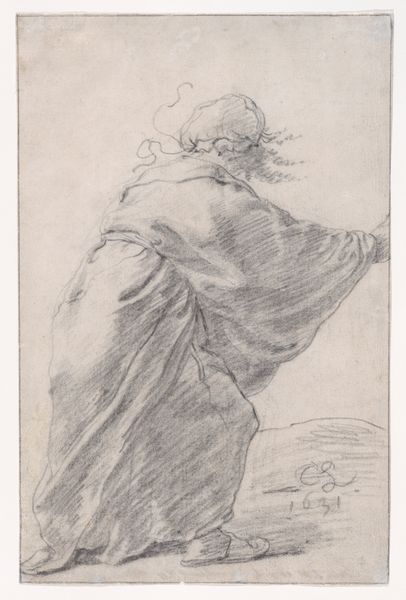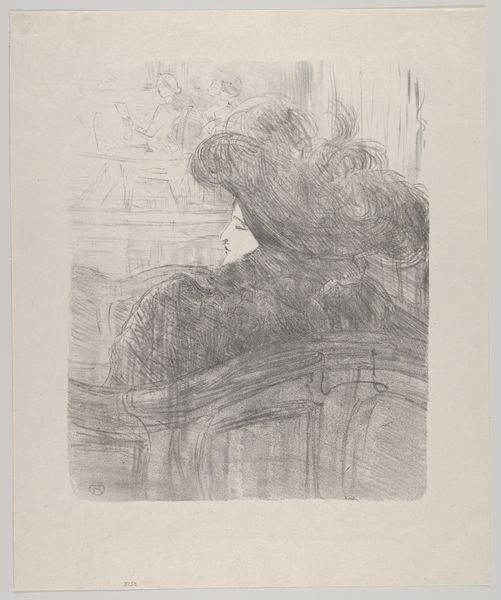
drawing, paper, ink, pen
#
portrait
#
drawing
#
toned paper
#
light pencil work
#
quirky sketch
#
baroque
#
pencil sketch
#
paper
#
personal sketchbook
#
ink
#
pencil drawing
#
pen-ink sketch
#
sketchbook drawing
#
pen
#
pencil work
#
genre-painting
#
sketchbook art
Dimensions: height 209 mm, width 176 mm
Copyright: Rijks Museum: Open Domain
Curator: Here we have "Orgelspelende vrouw," or "Woman Playing the Organ," a pen and ink drawing on toned paper attributed to Leonaert Bramer, likely dating from the mid-17th century. It's currently held here at the Rijksmuseum. Editor: My initial feeling is that this is incredibly intimate. Like a quick peek into someone's personal sketchbook. The muted tones and delicate lines really draw you into the quiet focus of the woman. Curator: Yes, there’s definitely a sense of immediacy. Bramer was known for his genre scenes and his detailed studies, and you can see how this work blends those interests. Considering the materials—the relatively inexpensive paper and the easily accessible ink and pen—it makes me think about artistic labor at that time. What did it mean to sketch and capture fleeting moments? Editor: I wonder about the tonal quality of that paper, especially since it appears "toned," meaning it was treated and thus produced and traded by an artisan of the day, who must have specialized in artist's media... Who was he, and how did that support a drawing like this? How might the final selling price reflect his labor versus that of the artist? Curator: That's a really interesting point, how the various layers of labour, from papermaking to distribution to application, are actually present within the very object before us. I also sense a playfulness here; it has all the hallmarks of a doodle, as the light pencilwork does suggest something quirky. Editor: I’m interested in how the materials also limit and enable artistic vision. Toned paper, ink, and pen provide a ready surface for quick, expressive lines, but Bramer clearly made deliberate choices about composition and light. Look at how he suggests volume through varied line thickness; it’s economical and skillful, so even this playful work feels complete. Curator: You're right to consider that tension between the free sketch and conscious technique, but I feel the energy of Baroque dynamism. She's caught in the act of making music. And she could even be at the dawn of music composition, or is even improvising! I think it is safe to assume a woman musician playing with newfound liberties. Editor: Exactly. Seeing her immersed, crafting both sound and space in real-time—and thinking of this sketch’s dependence on the networks of paper, pigment, and skilled labor supporting it. It shifts how I think about what's happening in those swift, dark marks and shading that imply it, somehow. Curator: A wonderfully layered experience of music making. I am really now left with such rich implications around her, and this deceptively modest sketch. Editor: Indeed.
Comments
No comments
Be the first to comment and join the conversation on the ultimate creative platform.

